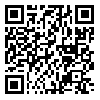Volume 18, Issue 3 (2015)
mjms 2015, 18(3): 87-96 |
Back to browse issues page
Download citation:
BibTeX | RIS | EndNote | Medlars | ProCite | Reference Manager | RefWorks
Send citation to:



BibTeX | RIS | EndNote | Medlars | ProCite | Reference Manager | RefWorks
Send citation to:
Karimi M, Dalimi A, Jamei F, Ghaffarifar F, Dalimi A. The Killing effect of Silver Nanoparticles and Direct Electric Current Induction on Leishmania major Promastigotes In Vitro. mjms 2015; 18 (3) :87-96
URL: http://mjms.modares.ac.ir/article-30-281-en.html
URL: http://mjms.modares.ac.ir/article-30-281-en.html
1- Department of Parasitology and Entomology, Faculty of Medical Sciences, Tarbiat Modares University, Tehran, Iran
2- Department of Electrical Power Engineering, Saveh Branch of Islamic Azad University, Saveh, Iran
2- Department of Electrical Power Engineering, Saveh Branch of Islamic Azad University, Saveh, Iran
Abstract: (6750 Views)
Objective: Worldwide, Leishmania major is one of the major causes of cutaneous leishmaniasis, including Iran. In the present study we investigate the effect of a direct electricity current in combination with silver nanoparticle on the killing of Leishmania major in vitro.
Methods: We evaluated the effects of different concentrations of silver nanoparticles against Leishmania major promastigotes in vitro, then the half maximal inhibitory concentration (IC50) of the nanoparticles was determined. In the second step, the killing effect of silver nanoparticles alone or in combination with 3mA of direct electric current was assessed in promastigote cultures for 10 minutes. Next, we evaluated the survival rate of treated promastigotes with the MTT assay.
Results: The parasite count showed that the various concentrations of silver nanoparticles significantly decreased the numbers of live promastigotes over time compared with the control group after 24, 48 and 72 hours of culture. The IC50 of the nanoparticles was 39.8 µg/ml after 48 hours of cultivation. Promastigote mortality occurred in 33.5% with the use of silver nanoparticles alone at concentrations of 160 µg/ml and 100% when combined with 3 mA direct current electricity after 10 minutes.
Conclusion: Silver nanoparticles alone did not completely kill Leishmania major promastigotes. However, the combined use of both direct current electricity and silver nanoparticles had a significant synergistic effect on promastigote mortality.
Article Type: Original Manuscipt |
Subject:
Medical Parasitology
Received: 2015/05/6 | Accepted: 2015/09/23
Received: 2015/05/6 | Accepted: 2015/09/23
| Rights and permissions | |
 |
This work is licensed under a Creative Commons Attribution-NonCommercial 4.0 International License. |






